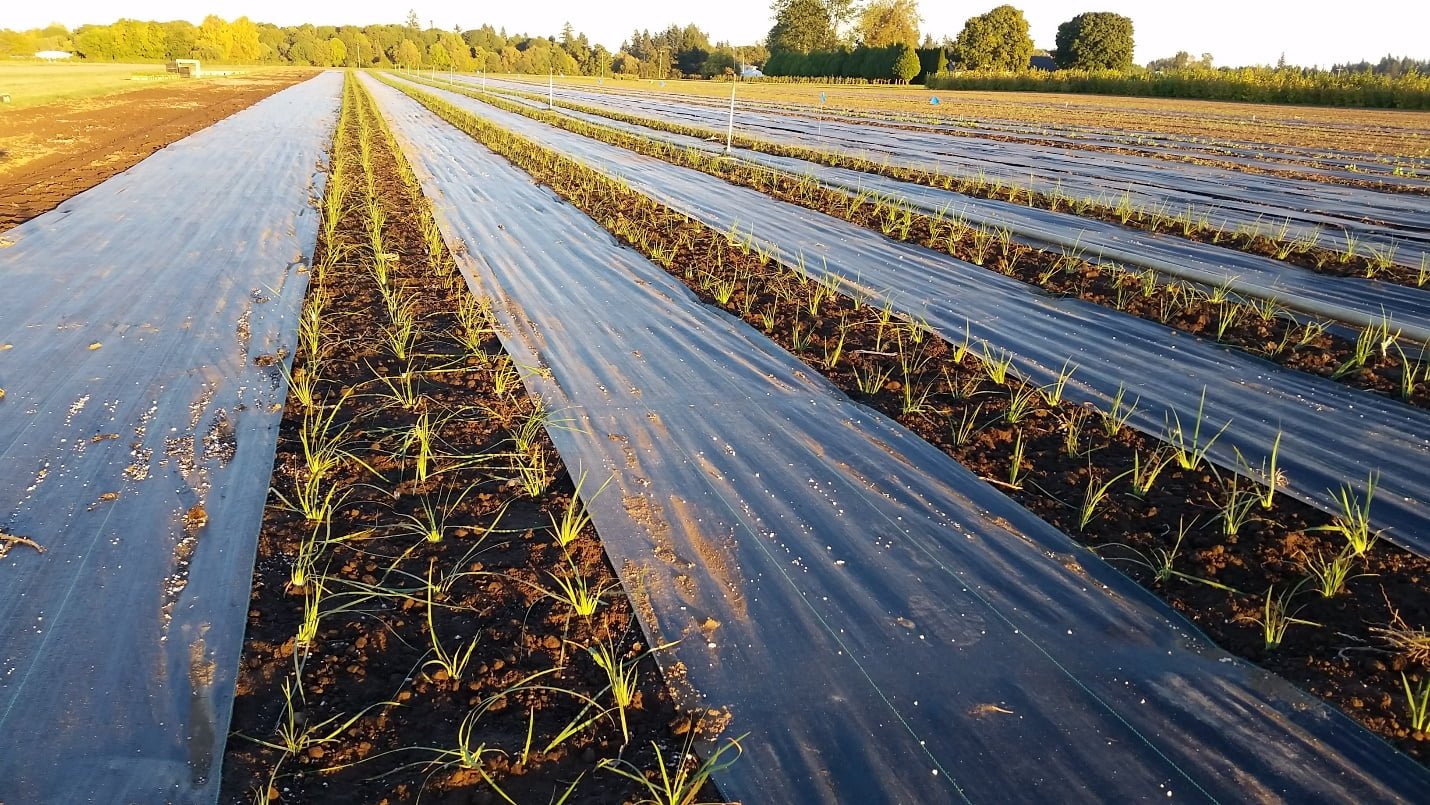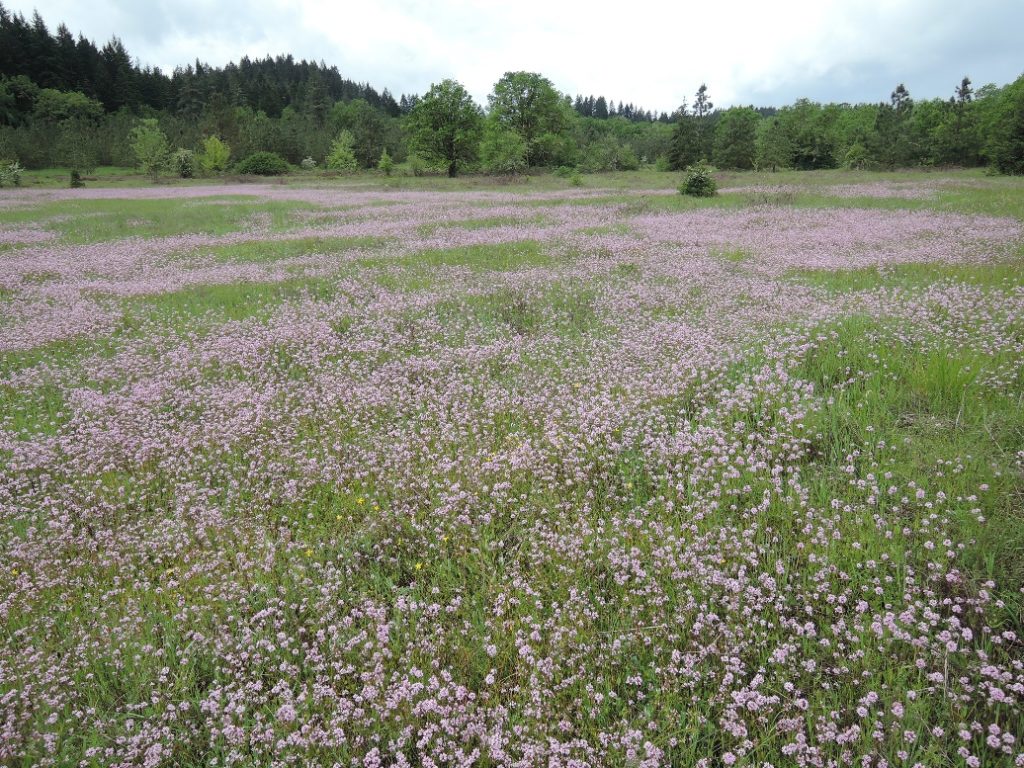
Celebrating Nearly a Decade of Native Seed Production in the Willamette Valley
February 2020
Historically, the Willamette Valley of Oregon was lush with fields of purple camas and rosy seablush in the spring, and goldenrod highlighted by the last rays of sun in the fall. Today this prairie habitat is among the most endangered ecosystems in North America with over 90% of upland and wet prairie habitat converted to other uses. Restoration practitioners have been actively restoring this critical habitat for decades but have been challenged to find high quality, diverse native seed for their projects.
In 2012 the Willamette Valley Native Plant Partnership (WVNPP) was created to help solve this problem. The WVNPP was formed by 21 restoration organizations and native plant producers who had a vision to create a partnership that would cooperatively fund and produce plant materials for use in restoration, revegetation, and mitigation throughout the region. Key partners who have provided fundamental support critical to the success of the WVNPP include Army Corps of Engineers, Bureau of Land Management, Oregon Department of Fish & Wildlife, Oregon Metro, Oregon Watershed Enhancement Board, The Nature Conservancy, and U.S. Fish & Wildlife Service.
The goal was to create a supply of seed that is genetically diverse and ecologically appropriate. The approach taken was to collect seed from many source populations throughout the Willamette Valley to capture a broad genetic base for each species. Research was conducted to evaluate genetic differences between populations and determine when seed should be combined or kept separate (Miller et. al. 2011). This seed was then used to establish farm fields of high priority native species so partners could purchase seed for use in their restoration and revegetation projects. Within the first year, the WVNPP built an organizational infrastructure for the partnership, hired a seasonal crew for seed collection, and entered its first two species into production – slender cinquefoil (Potentilla gracilis) and western goldenrod (Solidago lepida).
Since its beginnings nearly a decade ago, the WVNPP has much to celebrate. Over six seasons, crews have collected 72 pounds of seed from 27 native species from hundreds of wild populations scattered throughout the Willamette Valley. There are now 21 fields in production which has resulted in a yield of over 3,100 pounds of native seed. Approximately 2/3 of this seed has been distributed to partners and spread in prairie habitats throughout the ecoregion. The partnership has grown to 32 partner organizations who support the WVNPP.
The WVNPP is continuing to build on this success by increasing our marketing and outreach to gain new membership while we wait patiently for new species to produce seed and for restored prairies to brighten the Willamette Valley with a vibrant palette of wildflowers throughout the growing season once again.
Reference:
Miller, S.A., A. Bartow, M. Gisler, K. Ward, A. Young, and T. Kaye. 2011. Can an ecoregion serve as a seed transfer zone? Evidence from a common garden study with five native species. Restoration Ecology. 19(201):268-276.
Restoration
Research
Education
Get Involved
Contact
Main Office:
4950 SW Hout Street
Corvallis, OR 97333-9598
541-753-3099
[email protected]
Southwest Office:
1202 Parkway Dr. Suite B
Santa Fe, NM 87507
(505) 490-4910
[email protected]
© 2024 Institute for Applied Ecology | Privacy Policy

